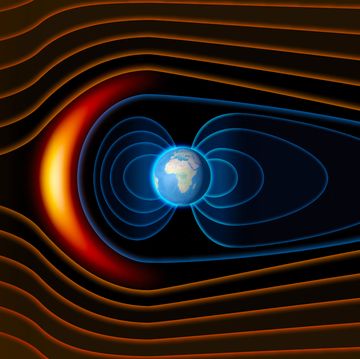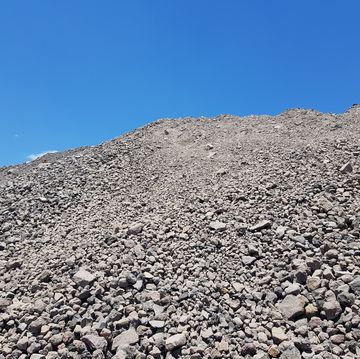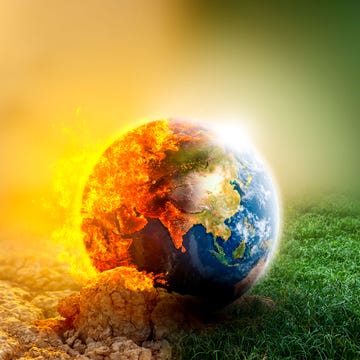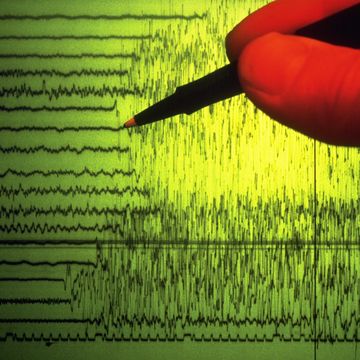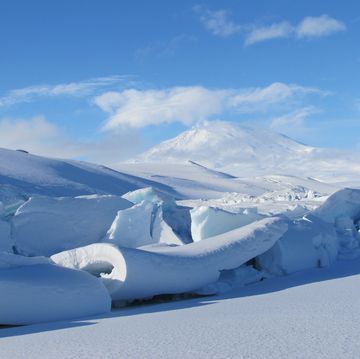- In recent years, the Earth’s rotation has been speeding up due to dynamics in the planet’s liquid outer core.
- This increase presented the possibility that scientists might soon have delete a leap second.
- However, a new study says that global warming’s impact on the polar ice caps is counteracting that speed up, and will likely delay the need for a deleted leap second until 2028 or 2029.
The Earth’s rotation feels like a constant, but that speed actually goes through lots of small fluctuations that are unnoticed by most of the planet’s 8 billion human inhabitants. Earthquakes, volcanoes, tidal forces, and wind patterns can affect how fast or slow the world turns, and now a new paper is positing that the redistribution of mass from the poles to the rest of the world’s oceans—a.k.a. polar ice melt—is slowing down the world’s rotation. Interestingly, that’s actually delaying an unprecedented moment in history: the first ever deletion of a leap second. The slow-down is counteracting a speed-up.
Over the course of Earth’s history, its rotation has been slowing down. Some 1.4 billion years ago, a day lasted 18 hours and 41 minutes and during the Age of Dinosaurs, a day was only 23 hours. That’s a pretty slow-going process—so slow, in fact, that an Earth day is only 0.047 seconds longer than it was at the end of the Bronze Age. However, recently, the Earth has been bucking this trend due to the rotation of the planet’s liquid outer core, which is actually speeding things up. Now, a new study published this week in the journal Nature argues that climate change will likely delay the need to delete a leap second sometime in 2028 or 2029.
“Even a few years ago, the expectation was that leap seconds would always be positive, and happen more and more often,” study author Duncan Agnew, a geophysicist at Scripps Institution of Oceanography at UC San Diego, said in a press statement. “But if you look at changes in the Earth’s rotation, which is the reason for leap seconds, and break down what causes these changes, it looks like a negative one is quite likely. One second doesn't sound like much, but in today’s interconnected world, getting the time wrong could lead to huge problems.”
According to Scientific American, it’s likely that scientists would’ve needed to delete a leap second much sooner if climate change wasn’t a thing, but the warming of ice caps has delayed the needed to make this unprecedented decision—delayed, but not avoided.
“There’s never been a negative leap second before, and leap seconds themselves have always been a problem for people running computer networks,” Agnew told Scientific American. “Given that many crucial systems rely on precise timekeeping. “Having to include a negative leap second would be a bigger problem because they’ve never had to do it.”
Since 1972, scientists have added 27 leap seconds to the clock—sometimes with disastrous results. Website crashes, tech service blackouts, airline reservation system snafus, and financial market wonkiness are only some of the worries, and companies like Google and Meta have even invented a method called a “leap smear” that essentially spreads the added second across the day. What could happen when scientists subtract a leap second remains to be seen.
However, it’s likely that this will be the one and only time humans will delete a second from its clock. In November of 2022, government representatives at the General Conference on Weights and Measures decided to do away with the leap second by 2035.
So, while the leap second will soon be retired, we’ll still likely have a front row seat to whatever happens when clocks “skip” a second of time.
Darren lives in Portland, has a cat, and writes/edits about sci-fi and how our world works. You can find his previous stuff at Gizmodo and Paste if you look hard enough.


